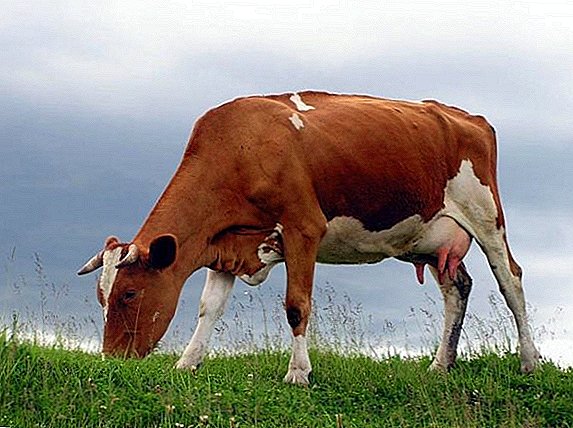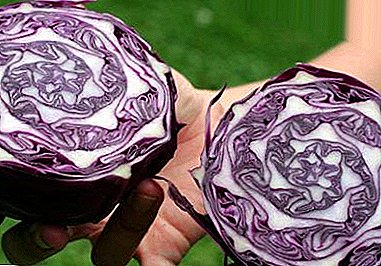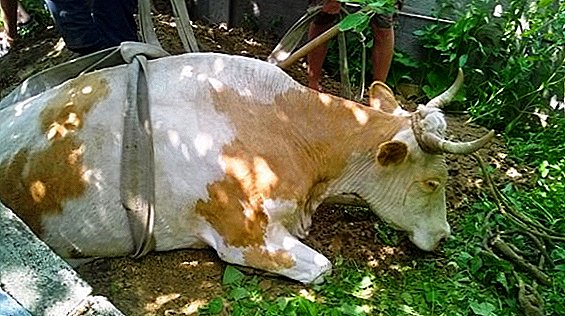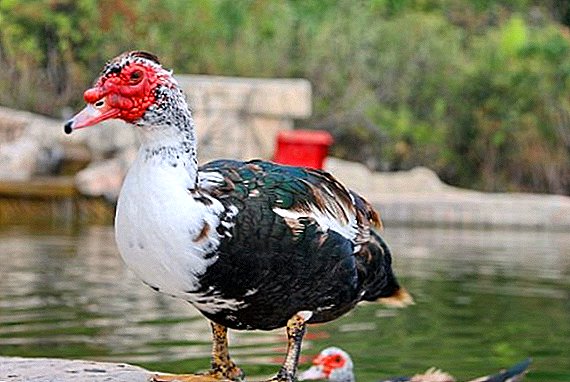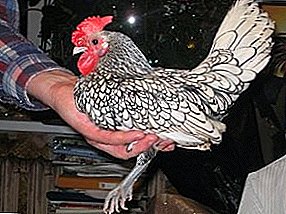
Dwarf ornamental chickens of the Bentam or Bentham breed not only decorate the house, but also provide the farm with tasty meat and nutritious eggs.
The hens of the Bentham breed, despite being the tiniest representatives of the chicken family, are suitable for home breeding.
They give tasty tender meat, differ in excellent egg production, are fertile and carefully care for their offspring.
Breeding chicken Bentamok - profitable activitySince the breed has good egg-meat indicators, and the number of chickens is increasing rapidly. Benthams are unpretentious in food and do not differ in gluttony.
Origin
 Chickens breed Bentam or Bentamki lead their origin from Japan.
Chickens breed Bentam or Bentamki lead their origin from Japan.
At home Bentamki live in the wild.
Like all breeds of natural origin, chickens are adapted to life, are distinguished by good health and fertility.
They get around disease, small offspring and extinction - this is the lot of breeds artificially bred.
Bentham will not refuse to sit out the eggs of any chickens, and will faithfully take care of other chickens.
They were brought to Russia a long time ago, the mention of them in literary sources can be found already in the 18th century. Then Bentam chickens were imported as an ornamental breed - they served as a garden decoration.
Only wealthy people could afford them. Bentham on the lawn served as a sign of prosperity and good taste. Tiny, colorfully painted cockerels and chickens were called “blood orange flakes”.
Specifications
- Weight - 0.5 kg of chicken, 0.6 - 1 kg of cock.
- The number of eggs - 80 - 130 per year. Egg weight about 45 g
- Laying 5-7 eggs.
Description
 According to the scientific classification, the hens of the Bentham are classified as a dwarf ornamental breed. The weight of the rooster Bentham is no more than a kilogram; the hens are about half a kilogram.
According to the scientific classification, the hens of the Bentham are classified as a dwarf ornamental breed. The weight of the rooster Bentham is no more than a kilogram; the hens are about half a kilogram.
In good conditions, the chicken can bring a year up to 150 eggs weighing about 45 grams. The real number that farmers call Bantamok is 80 eggs a year.
In healthy Bantamock skin and legs have a light yellow color, and the comb - pale pink.
Bright plumage differs in different breeds of Bentham.
Bentham breed has two features:
- tiny sizes;
- colorful plumage even in chickens.
Varieties
Nanking
 The ancient representatives of the bright yellow-yellow color. The rooster has a contrasting black plumage on the neck, chest and tail, with dark specks.
The ancient representatives of the bright yellow-yellow color. The rooster has a contrasting black plumage on the neck, chest and tail, with dark specks.
The legs of the Nanking variety without feathers.
Featherleg
The white representatives of the Bentham with their legs thickly covered with plumage.
Beijing
The most popular breed Bentam - the smallest and most attractive in the genus. Due to the fact that the Pekingians resemble Cochin-women externally, the breed has a second name - Bentham Cochin.

Dutch (white and white)
A very beautiful variety Bentham is a Dutch white-crested. As the name implies, chickens have white crest on the head - with black plumage, they look very bright.
The appearance of the Dutch women is very bright and unusual:
- the main plumage is black with a metallic sheen;
- white sprawling crest on the head;
- dark or even black beak;
- bright red comb;
- black legs.
Beauty was not conducive to the popularity of the breed, since the main distinguishing feature of the breed - the crest - causes various problems.
The crest gets dirty when feeding, pollution gets into the eyes and causes inflammatory processes. Chickens tend to pull feathers from the tufts of each other, and plucked Dutch Dutch head Bentamok looks pathetic and unattractive.
 If you want to learn more about meat-type chickens, then you need a Plymouthrock.
If you want to learn more about meat-type chickens, then you need a Plymouthrock.About the content of quail at home, our specialists described in detail on the page //selo.guru/fermerstvo/soderzhanie/perepela-v-domashnih-uslovijah.html.
Padua
Breed for Bantamok quite large.
Have an unusually attractive plumage:
- silver on white;
- dark (black) on the golden.
Silver coloring attracts more connoisseurs, since the spots have an unusual crescent shape.
Seabright
The benthames of Seabright are one of the few representatives of the Bentham breed, which is prone to extinction. They have low reproduction, and numerous diseases mow young. Individual representatives of Bentham Sebright survive to adulthood.
Seabright’s roosters are militant, and the chickens are barren, which, in general, is not characteristic of Bantamok.

The color of Seabright is very beautiful, there are two main types of them:
- golden on bay or light golden with black edging of the pen;
- silver on a silvery white with black edging feather.
Hamburg black
The black iridescent plumage is combined with a red crest and black legs. Despite the name in the same breed Bentam there are snow-white representatives with the same white beak and pale pink legs.
Shabo (Japanese)
Shabo - representatives of the main line Bentam, which lives in Japan in the wild. Shabo has no definite coloration, but chickens have characteristic dwarf sizes, proportions and shapes typical of Benthams.
Shabo - the tiniest representatives of the genus Bentham.
Phoenix (Yokohama)
This species is not quite natural origin - phoenixes were specifically bred in Japan in the 18th century.

Chickens have a simple yellow-brown color. The legs of the phoenix are yellow.
Rooster Bentam Phoenix - an ordinary fairy-tale firebird:
- black chest;
- red-gold neck and back;
- tail - green with a clear metallic sheen.
The main attraction of the cock Bentam Phoenix - tail. Its length is about 7 meters!
In order to keep the tail intact, the roosters are kept in special cages, especially valuable specimens - in glass - with special holders for the tail.
During daily walks, the tail is wound on the holder, and the rooster phoenix is being walked on the arms.
Naturally, only true collectors and those who breed phoenixes for commercial purposes will bother with all this. Collectors know that output analog Japanese phoenix in other countries can not - obviously, there are some special secrets, known only in Japan.
Chickens phoenix do not cause any trouble in keeping and breeding - their tails are of normal size.
For Bantamok phoenixes are unusually large, the size of an ordinary chicken.
What is the difference between Bentham and other breeds?
- The size. Bentham - the smallest dwarf chickens in the world, whose weight does not reach 0.5 kg in chickens and 1 kg in roosters.
- Decorative. Benthams are distinguished by bright contrasting plumage, general attractive appearance, cheerful character. Bentham serves as a real decoration of the house.
- Vocal singing. Bentamok can be diluted for the sake of sonorous and musical singing.
- Good health. Chickens Bentam, which have a natural origin and survive in natural conditions, are distinguished by good health. Diseases are rare among them.
- Survival. Bentamki know how to protect themselves and their young. Chickens fearlessly rush into battle with any predator: a cat, a fox or a kite. However, they can really stand up for themselves and do not require constant supervision.
- Maternal instinct. Chickens of the Bentham breed incubate eggs almost continuously, faithfully nurse their offspring. Almost all eggs in the clutch are hatching, and the survival rate of the young is very high. Those who breed Bentamok say that chickens can be used instead of an incubator on the farm - three Bentams will provide incubation of eggs for the whole house.
- Taste qualities. Chicken with a small weight gives meat with an unusual taste - like a game. Eggs have high taste and nutritional qualities.
Cultivation and maintenance
 Growing Bentamok profitable as a decorative breed, and for meat and eggs.
Growing Bentamok profitable as a decorative breed, and for meat and eggs.
Benthams are unpretentious in food and absorb a small amount of food. In the garden of the hen, the Bentham find microscopic larvae and insects that other breeds do not even perceive as food.
The hens of the Bentham breed survive, bring healthy offspring. In one summer season, a chicken can breed up to 25 chickens - an excellent indicator. The usual brood of Bantamok consists equally of females and males.
Eggs are hatching on the 21st day. The first 3 days of chickens need to be fed with soft food (crushed egg, cottage cheese), another 10 days - with millet. After two weeks, the hen itself transfers its offspring to regular feed, teaches them to look for feed on their own.
It happens that Bentham begins broods brood in a secluded place.. You should not look for it - the chickens have a strong instinct of self-preservation and will begin to carefully hide. It is best to wait - after a maximum of 3 days the maternal instinct will give way to hunger, and the chicken will go out in search of food.
It is necessary to secretly follow her from afar to find a brood, otherwise she will begin to confuse the trail. If the found clutch is very large, you need to leave only 7 eggs - Bentam will not sit out anymore. Large clutch will not give healthy offspring.
Analogs
Breeds of hens, similar to Bentham, are small egg-laying chickens from New Hampshire, Sussex, Andalusian, Russian purebred, Faverol and others.
They all differ in small size and weight and have high egg production.
 You can easily find out about the amazing properties of the Cochin Coop chickens meat breed on our website.
You can easily find out about the amazing properties of the Cochin Coop chickens meat breed on our website.In Russian conditions it is necessary to warm the wooden house outside. Read how to do it right here.
Where can I buy in Russia?
A few specialized farms are engaged in breeding Bentam.
- Chickens can be purchased from collectors in pieces. For example, Goron2003, Moscow, tel. +7 (903) 006-11-93
- Private nursery "Bird's Village"located in the Yaroslavl region - 140 km from Moscow. The nursery delivers adult chickens and eggs in the Moscow region in the region of 14 km from the Moscow Ring Road and to Moscow (metro, train stations, airport). In all other regions delivery is carried out by buyers. The coordinates of the nursery "Bird Trees" - //ptica-village.ru/catalogue/product/425.
- All-Russian Research and Technological Institute of Poultry. Moscow region, Sergiev Posad.
Bentham - dwarf ornamental breed of chickens. Bentams in Japan live in the wild, are distinguished by good health, survival, and good offspring.
It is possible to breed Bantamok as a colorful decorative breed. From the point of view of profitability, the breeding of Bentham on the farm is very profitable: the chickens eat little, do not get sick, bring about 100 eggs a year, possess meat, similar in taste to game, and nutritious eggs.
Benthams have a strong maternal instinct, so they can be used as a live incubator. One hen Bentam hatches 5-7 eggs at a time, and produces about 25 chicks per season.
Buy Bentamka can be in a specialized nursery or from collectors.


